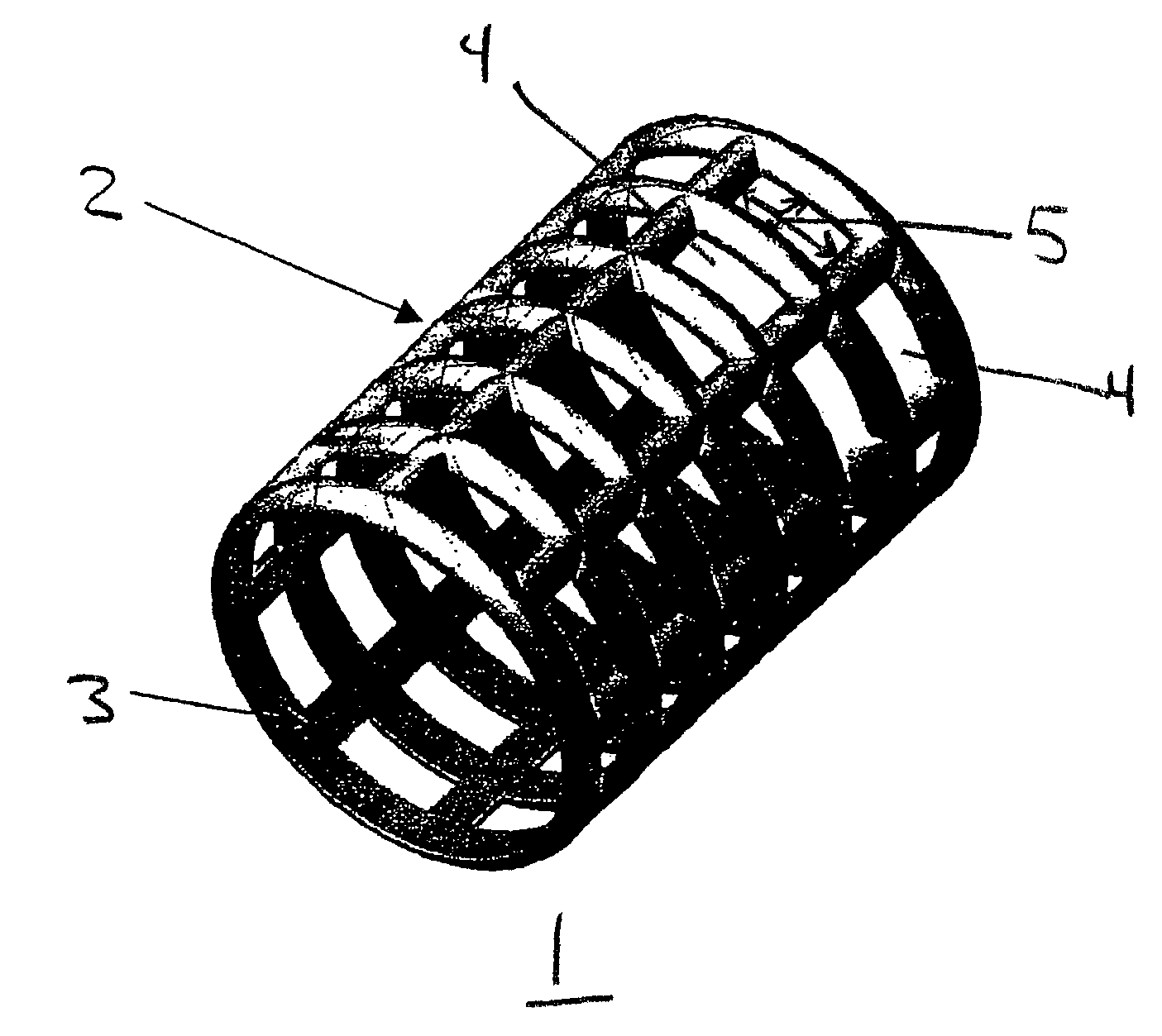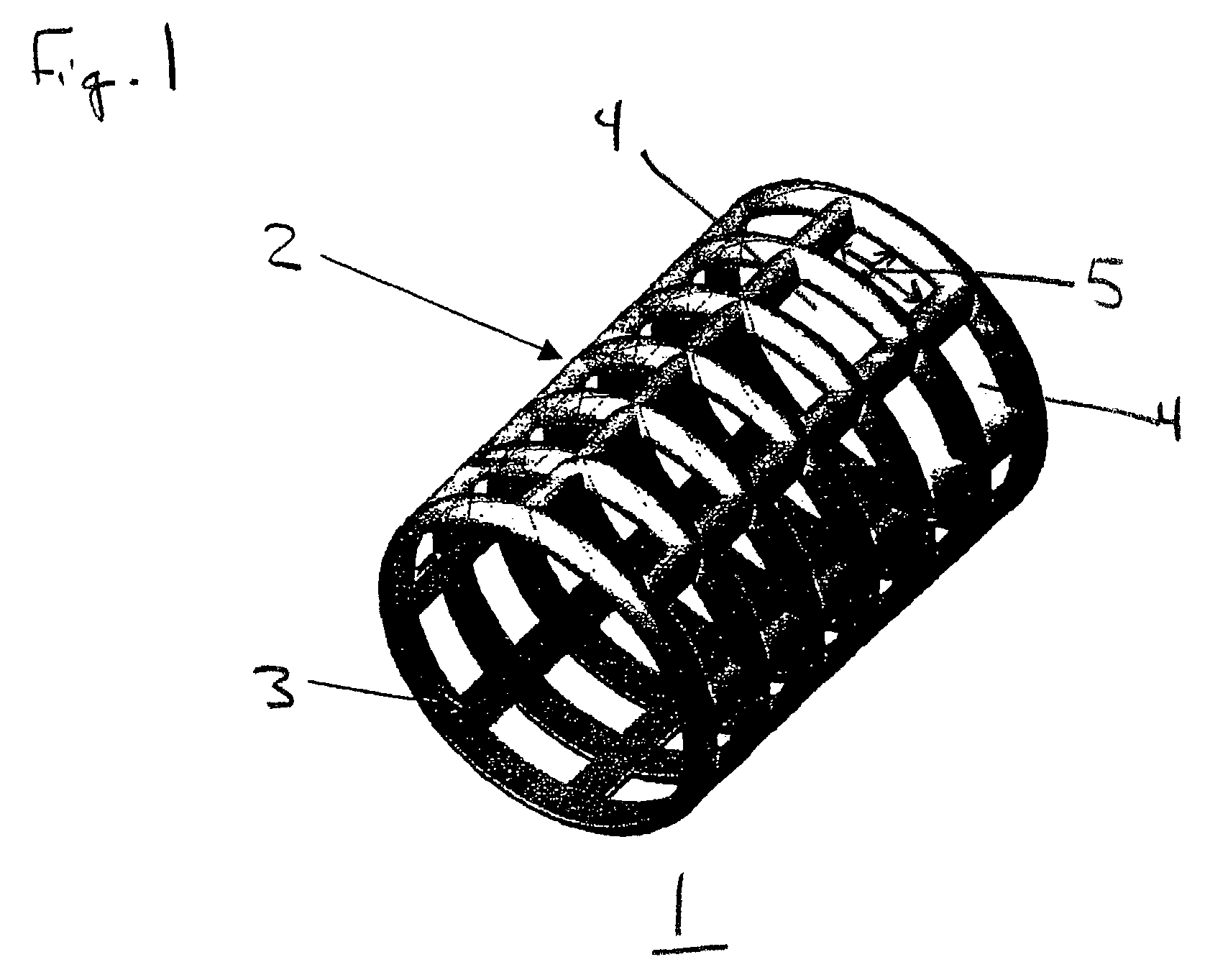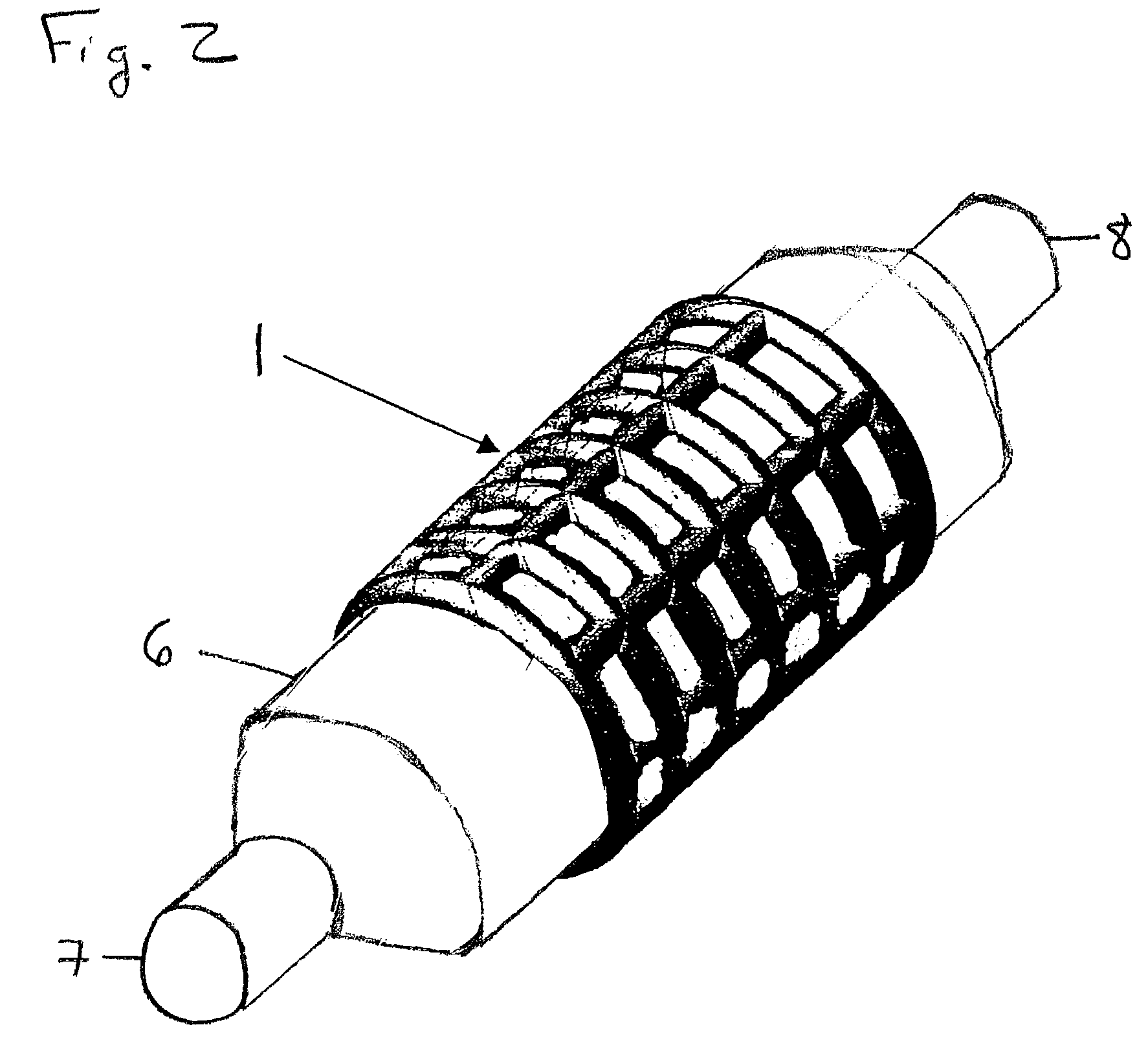Expandable mask stent coating method
- Summary
- Abstract
- Description
- Claims
- Application Information
AI Technical Summary
Benefits of technology
Problems solved by technology
Method used
Image
Examples
Embodiment Construction
[0022]FIG. 1 illustrates a stent 1 which is to receive a coating of a therapeutic material. As shown in the figure, stent 1 is generally cylindrical in shape, and is in the form of a lattice of a material such as stainless steel, Tantalum, Platinum or Nitinol alloys. Stent 1 has an outer surface 2 that will contact the inner wall of a lumen such as a blood vessel (not shown), and thus is to be coated with a therapeutic coating material to be delivered to the lumen wall. The stent also has an inner surface 3 that will be in contact with the fluid carried by the lumen. Inner surface 3 is to be maintained coating-free. The lattice configuration of stent 1 provides interstitial openings 4. Facing these openings, the stent structure has lateral surfaces 5 between the outer surfaces and the inner surfaces.
[0023]The present method is not limited to the stent lattice configuration shown in FIG. 1, as any of a variety of well-known stent configurations may be used. The cross-sectional shape ...
PUM
| Property | Measurement | Unit |
|---|---|---|
| Length | aaaaa | aaaaa |
| Area | aaaaa | aaaaa |
Abstract
Description
Claims
Application Information
 Login to View More
Login to View More - R&D
- Intellectual Property
- Life Sciences
- Materials
- Tech Scout
- Unparalleled Data Quality
- Higher Quality Content
- 60% Fewer Hallucinations
Browse by: Latest US Patents, China's latest patents, Technical Efficacy Thesaurus, Application Domain, Technology Topic, Popular Technical Reports.
© 2025 PatSnap. All rights reserved.Legal|Privacy policy|Modern Slavery Act Transparency Statement|Sitemap|About US| Contact US: help@patsnap.com



